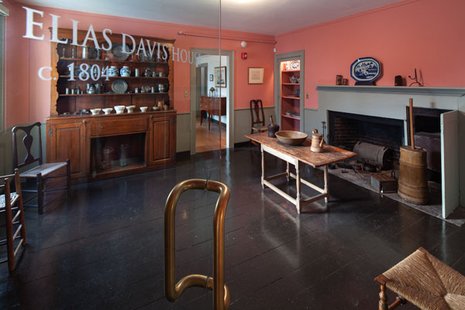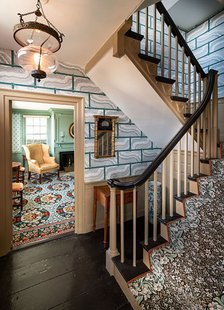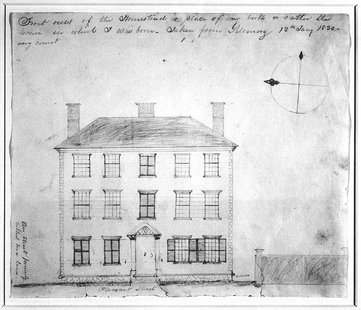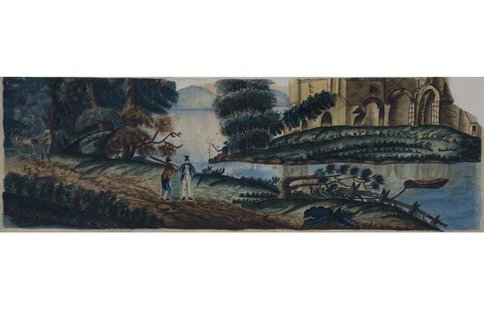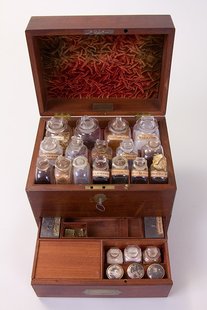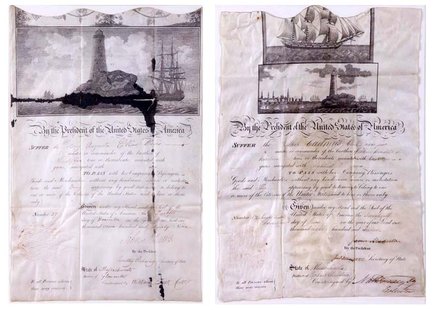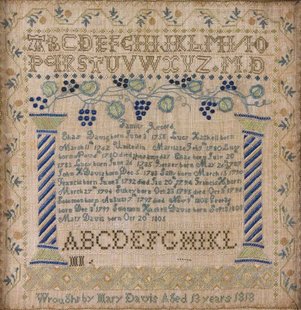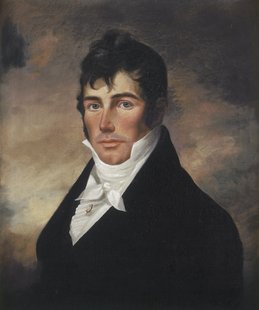Capt. Elias Davis House (c. 1804)
Davis House Carpeting and Wallpaper Installation
In early 2019, historically appropriate carpeting was installed in three of the principal rooms of the Capt. Elias Davis House (c.1804) and on the staircase leading to the second floor, bringing to completion the project begun with the hanging of period wallpaper in 2017. Both the carpeting and the wallpaper projects were funded through the generosity of Museum members and friends.
The Captain Elias Davis House, built in 1804 by one of Gloucester's most successful sea captains, houses much of the Museum's Furniture and Decorative Arts Collection.
Four of the house's 12 rooms are open to visitors. In keeping with life in the early 19th century, the Captain Elias Davis House is furnished and decorated with domestic and personal items.
Many of the objects in the house actually belonged to Elias Davis and his descendants, and include:
- A drawing of the Davis family crest from County Hereford, England.
- A portrait of the Captain painted c.1790 by an unknown Antwerp artist.
- The outfitted medicine chest and instruction book used by Captain Davis in his role as ship's doctor.
- Passports for two Davis family vessels, the ship Cadmus and the brig Augusta, signed by James Madison and John Adams respectively.
- A sampler stitched by Captain Davis's daughter Mary, naming all 13 of the Captain's children.
- A pencil drawing of the house itself, done from memory by son Soloman Haskell Davis in 1830 while he was away at sea.
Just across Federal Street, adjacent to the Museum, is a virtual twin to the Davis house. It was built by the widow of another prosperous Gloucester businessman, Samuel Somes. The Davis house was designed and constructed by housewright Jacob Smith and copied by his younger brother for the Somes family.
Additional Resources
- To hear how the house looked in 1976, listen to this Oral History and audio tour by E. Hyde Cox and Joe Garland recorded on February 23, 1976.
- Take a look around to see what a captain's house looked like in the early 19th century on this Virtual Tour of the Davis House.
- Edward Day Cahota
